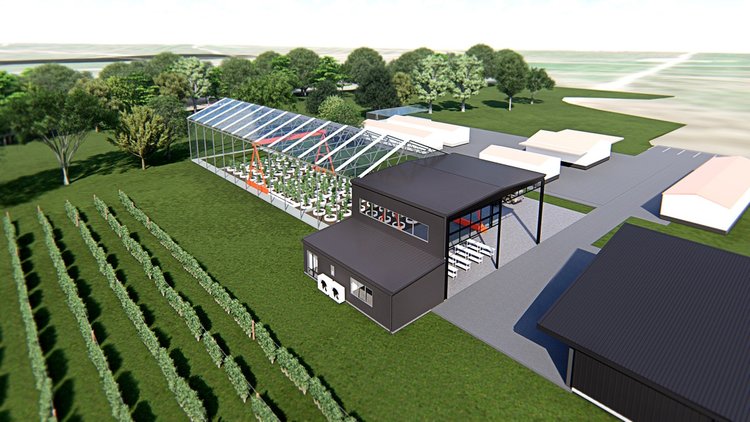New Zealand’s viticulture sector had a sustainability claim staked in the ground well ahead of its pastoral cousins and the experimental future vineyard (EFV) facility in Marlborough aims to keep the sector a world leader.
Due for opening in a year’s time, the 600sqm facility is being established alongside the relatively new Bragato Institute, which focuses on new and emerging wine making technology.
For Martin and his colleagues, the EFV has potential to fill a knowledge gap in the understanding of what happens to grape vines below the soil, not only in the increasingly relevant aspect of carbon capture, but also how vines respond to varying soil types in different conditions.
“A key part of the study work will include establishing commercial variety vines in reconstituted soils in very large containers. These soils will contain different ratios of gravel, stones, and silts. We have done quite a lot of world leading research in NZ on above ground vine management. But the new frontier is better understanding how that perennial aspect, the root systems of the plant.”
With more crops, including grapes having to meet ever more stringent controls over water use, synthetic pesticide use and fertilisers, the facility provides a means to better understand and optimise vineyard performance while minimising inputs, depending upon particular soil profiles.
Typically, NZ researchers have understood soil composition quite well, but the influence of rock, gravel and their relative ratios as such important parts of viticultural success, have been less well known.
Martin said it was quite possible the work could deliver growers some ready-reckoning data based on the studied soils’ responses, to enable them to better calculate outcomes from irrigation or fertiliser application.
With its extensive involvement in other crop research, it was possible the facility could also hold some uses in better understanding their behaviour under certain conditions too.
With Marlborough a hub for dry land forestry as much as wine growing, it may be a useful facility for studying eucalyptus tree species selection relative to their drought tolerance, for example.
With climate change impacting the certainty of key growing periods like budding, fruit formation and final harvest, the ability to adjust humidity and temperature were also of value to researchers.
Increases in humidity, alongside temperature increases at key harvest time, for example, can have devastating effects on grape harvest quality and quantity.
This is also becoming more critical as traditional winemaking zones become almost entirely committed to crop and growers start to explore beyond those areas to less traditional viticultural areas.
NZ relies upon a relatively limited source of root stock for most wine varieties and with irrigation being available, attention has not been so high on drought tolerance.
“But with climate change, should water supply become more limiting in future, then more understanding of how they respond will become important.”
Consumer expectations will also be driving some of the work out of the new centre.
The ability to better measure stored carbon within vines’ woody component and root systems will prove invaluable against a research backdrop that has tended to focus more on the top few centimetres of topsoil when assessing sequestration in (largely) pastoral systems.
“It is deep down we also want to better understand what is happening, how long carbon is in and out of the system. It Is difficult to measure and can take a long time, something growers are unable to do but we hope to be able to make those finer measurements,” Martin said.
The ability to make validated claims about carbon sequestration and zero-carbon wine-making could hold some valuable marketing leverage, completing a systems view of a winemaking operation.
“It could be that for organic systems, where output may be lower but more carbon were sequestered, there could be a case for a higher retail price to be justified.”










